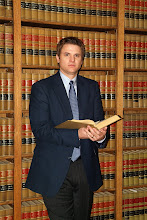The law passed as part of the Less Tears More Years Act —a collection of new laws to tighten up restrictions on teen drivers and increase their safety.
The specific provision requires the Department of Public Safety to collect statistics on how many new drivers get into car crashes during the first year after they finish a driver's education course. The collision statistics also will be published, so parents presumably will be able to compare individual driving programs and enroll their children in the ones with lowest collision rates.
DPS spokesmen were careful to say they are not sure how the law will be enforced. One spokesman suggested that the law might only compare methods of driver's education: programs taught in public schools, versus private courses, versus parent-taught methods.
That might be useful, but a compelling study has already revealed that teens taught to drive by their parents are 2.7 times more likely to get into a fatal accidentthan those who take formal driver's ed courses. The 2007 study focused on Texas and was funded by the National Highway Traffic Safety Administration.
The way I read the new law, a parent could look online and compare the collision rate for graduates of specific driving schools — both private institutes and programs in public high schools — and choose ones with low collision rates for new graduates.
The law's author, state Rep. Larry Phillips, R-Sherman, also said that was the intent, though he considered the primary beneficiary to be the Texas Education Agency, which is charged with monitoring driving schools.
Driving schools, naturally, are wary of this law and had many questions about how it would work.
“I don't see any reason it should be a bad thing if it's reported correctly, because that would ensure competition,” said Phillip Oller, manager of the Pearland Driving School, which has three locations and has been around since 1979.
“If it's not reported fairly, it could be bad,” said Oller. What would be unfair use of the crash statistics? According to Oller, any report that excluded parent-taught teens. Texas allows parents to teach their teens to drive using pre-approved curricula, and driving schools don't like that option because it represents competition to their business.
There are so many factors that influence whether a new teenage driver gets into a crash, Oller said. Teens in urban areas might get into more crashes than rural teens, simply because they drive in denser traffic. It might be unfair to put all the onus on the driving school, which the public ratings would do.
“It also has to do with how much practice they get outside of us,” Oller said. “Some of these parents have really nice cars and they don't want their teens driving them. There are a lot of things going into it. I don't know how these statistics are going to take into account the whole picture.”
There is more than enough time to work out the details, since DPS has until 2011 to publish the first report.
Meanwhile, some significant driving laws went into effect Sept. 1. Here's a sampling:
• • Everyone in a vehicle must now wear a seat belt. Before it was only children or adults in the front seat. Children under 8 must be in a child-safety seat unless they are at least 4 feet, 9 inches tall.
• • Motorcyclists no longer may carry kids under 5 as passengers, except in a sidecar.
• • Drivers under age 18 may not use cell phones or wireless devices while driving.
• • All drivers are prohibited from using wireless devices in posted school zones, unless the devices are hands-free.
• • Teens under 18 must now take a road test with DPS before being issued a license.
• • For one year after licensure (extended from six months), teen drivers are not permitted to drive from midnight to 5 a.m., and may not have more than one passenger under age 21.
• • Truck drivers who smuggle “an alien” in their trucks could lose their commercial driver's licenses permanently, instead of just for one year.
I thought this was interesting. Click here for original article.

1 comment:
Great post with Great stuff.That sounds pretty cool. Keep posting interesting Texas Driver Education here. Looking forward to it. Thanks and keep it up! All the Best
Post a Comment